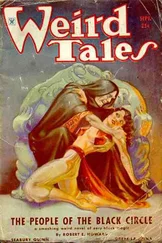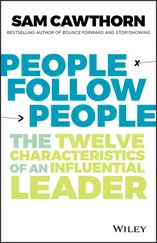Howard Zinn - A People
Здесь есть возможность читать онлайн «Howard Zinn - A People» весь текст электронной книги совершенно бесплатно (целиком полную версию без сокращений). В некоторых случаях можно слушать аудио, скачать через торрент в формате fb2 и присутствует краткое содержание. Издательство: Harper-Collins, Жанр: Фэнтези, на английском языке. Описание произведения, (предисловие) а так же отзывы посетителей доступны на портале библиотеки ЛибКат.
- Название:A People
- Автор:
- Издательство:Harper-Collins
- Жанр:
- Год:неизвестен
- ISBN:нет данных
- Рейтинг книги:4 / 5. Голосов: 1
-
Избранное:Добавить в избранное
- Отзывы:
-
Ваша оценка:
- 80
- 1
- 2
- 3
- 4
- 5
A People: краткое содержание, описание и аннотация
Предлагаем к чтению аннотацию, описание, краткое содержание или предисловие (зависит от того, что написал сам автор книги «A People»). Если вы не нашли необходимую информацию о книге — напишите в комментариях, мы постараемся отыскать её.
A People — читать онлайн бесплатно полную книгу (весь текст) целиком
Ниже представлен текст книги, разбитый по страницам. Система сохранения места последней прочитанной страницы, позволяет с удобством читать онлайн бесплатно книгу «A People», без необходимости каждый раз заново искать на чём Вы остановились. Поставьте закладку, и сможете в любой момент перейти на страницу, на которой закончили чтение.
Интервал:
Закладка:
Some historians have painted a picture-based on the infrequency of organized rebellions and the ability of the South to maintain slavery for two hundred years-of a slave population made submissive by their condition; with their African heritage destroyed, they were, as Stanley Elkins said, made into "Sambos," "a society of helpless dependents." Or as another historian, Ulrich Phillips, said, "by racial quality submissive." But looking at the totality of slave behavior, at the resistance of everyday life, from quiet noncooperation in work to running away, the picture becomes different.
In 1710, warning the Virginia Assembly, Governor Alexander Spotswood said:
…freedom wears a cap which can without a tongue, call together all those who long to shake off the fetters of slavery and as such an Insurrection would surely be attended with most dreadful consequences so I we cannot be too early in providing against it, both by putting our selves in a better posture of defence and by making a law to prevent the consultations of those Negroes.
Indeed, considering the harshness of punishment for running away, that so many blacks did run away must be a sign of a powerful rebelliousness. All through the 1700s, the Virginia slave code read:
Whereas many times slaves run away and lie hid and lurking in swamps, woods, and other obscure places, killing hogs, and commiting other injuries to the inhabitants… if the slave does not immediately return, anyone whatsoever may kill or destroy such slaves by such ways and means as he… shall think fit… If the slave is apprehended… it shall… be lawful for the county court, to order such punishment for the said slave, either by dismembering, or in any other way… as they in their discretion shall think fit, for the reclaiming any such incorrigible slave, and terrifying others from the like practices…
Mullin found newspaper advertisements between 1736 and 1801 for 1,138 men runaways, and 141 women. One consistent reason for running away was to find members of one's family-showing that despite the attempts of the slave system to destroy family ties by not allowing marriages and by separating families, slaves would face death and mutilation to get together.
In Maryland, where slaves were about one-third of the population in 1750, slavery had been written into law since the 1660s, and statutes for controlling rebellious slaves were passed. There were cases where slave women killed their masters, sometimes by poisoning them, sometimes by burning tobacco houses and homes. Punishment ranged from whipping and branding to execution, but the trouble continued. In 1742, seven slaves were put to death for murdering their master.
Fear of slave revolt seems to have been a permanent fact of plantation life. William Byrd, a wealthy Virginia slaveowner, wrote in 1736:
We have already at least 10,000 men of these descendants of Ham, fit to bear arms, and these numbers increase every day, as well by birth as by importation. And in case there should arise a man of desperate fortune, he might with more advantage than Cataline kindle a servile war… and tinge our rivers wide as they are with blood.
It was an intricate and powerful system of control that the slaveowners developed to maintain their labor supply and their way of life, a system both subtle and crude, involving every device that social orders employ for keeping power and wealth where it is. As Kenneth Stampp puts it:
A wise master did not take seriously the belief that Negroes were natural-born slaves. He knew better. He knew that Negroes freshly imported from Africa had to be broken into bondage; that each succeeding generation had to be carefully trained. This was no easy task, for the bondsman rarely submitted willingly. Moreover, he rarely submitted completely. In most cases there was no end to the need for control-at least not until old age reduced the slave to a condition of helplessness .
The system was psychological and physical at the same time. The slaves were taught discipline, were impressed again and again with the idea of their own inferiority to "know their place," to see blackness as a sign of subordination, to be awed by the power of the master, to merge their interest with the master's, destroying their own individual needs. To accomplish this there was the discipline of hard labor, the breakup of the slave family, the lulling effects of religion (which sometimes led to "great mischief," as one slaveholder reported), the creation of disunity among slaves by separating them into field slaves and more privileged house slaves, and finally the power of law and the immediate power of the overseer to invoke whipping, burning, mutilation, and death. Dismemberment was provided for in the Virginia Code of 1705. Maryland passed a law in 1723 providing for cutting off the ears of blacks who struck whites, and that for certain serious crimes, slaves should be hanged and the body quartered and exposed.
Still, rebellions took place-not many, but enough to create constant fear among white planters. The first large-scale revolt in the North American colonies took place in New York in 1712. In New York, slaves were 10 percent of the population, the highest proportion in the northern states, where economic conditions usually did not require large numbers of field slaves. About twenty- five blacks and two Indians set fire to a building, then killed nine whites who came on the scene. They were captured by soldiers, put on trial, and twenty-one were executed. The governor's report to England said: "Some were burnt, others were hanged, one broke on the wheel, and one hung alive in chains in the town…" One had been burned over a slow fire for eight to ten hours-all this to serve notice to other slaves.
A letter to London from South Carolina in 1720 reports:
I am now to acquaint you that very lately we have had a very wicked and barbarous plot of the designe of the negroes rising with a designe to destroy all the white people in the country and then to take Charles Town in full body but it pleased God it was discovered and many of them taken prisoners and some burnt and some hang'd and some banish'd .
Around this time there were a number of fires in Boston and New Haven, suspected to be the work of Negro slaves. As a result, one Negro was executed in Boston, and the Boston Council ruled that any slaves who on their own gathered in groups of two or more were to be punished by whipping.
At Stono, South Carolina, in 1739, about twenty slaves rebelled, killed two warehouse guards, stole guns and gunpowder, and headed south, killing people in their way, and burning buildings. They were joined by others, until there were perhaps eighty slaves in all and, according to one account of the time, "they called out Liberty, marched on with Colours displayed, and two Drums beating." The militia found and attacked them. In the ensuing battle perhaps fifty slaves and twenty-five whites were killed before the uprising was crushed.
Herbert Aptheker, who did detailed research on slave resistance in North America for his book American Negro Slave Revolts , found about 250 instances where a minimum of ten slaves joined in a revolt or conspiracy.
From time to time, whites were involved in the slave resistance. As early as 1663, indentured white servants and black slaves in Gloucester County, Virginia, formed a conspiracy to rebel and gain their freedom. The plot was betrayed, and ended with executions. Mullin reports that the newspaper notices of runaways in Virginia often warned «ill-disposed» whites about harboring fugitives. Sometimes slaves and free men ran off together, or cooperated in crimes together. Sometimes, black male slaves ran off and joined white women. From time to time, white ship captains and watermen dealt with runaways, perhaps making the slave a part of the crew.
Читать дальшеИнтервал:
Закладка:
Похожие книги на «A People»
Представляем Вашему вниманию похожие книги на «A People» списком для выбора. Мы отобрали схожую по названию и смыслу литературу в надежде предоставить читателям больше вариантов отыскать новые, интересные, ещё непрочитанные произведения.
Обсуждение, отзывы о книге «A People» и просто собственные мнения читателей. Оставьте ваши комментарии, напишите, что Вы думаете о произведении, его смысле или главных героях. Укажите что конкретно понравилось, а что нет, и почему Вы так считаете.












